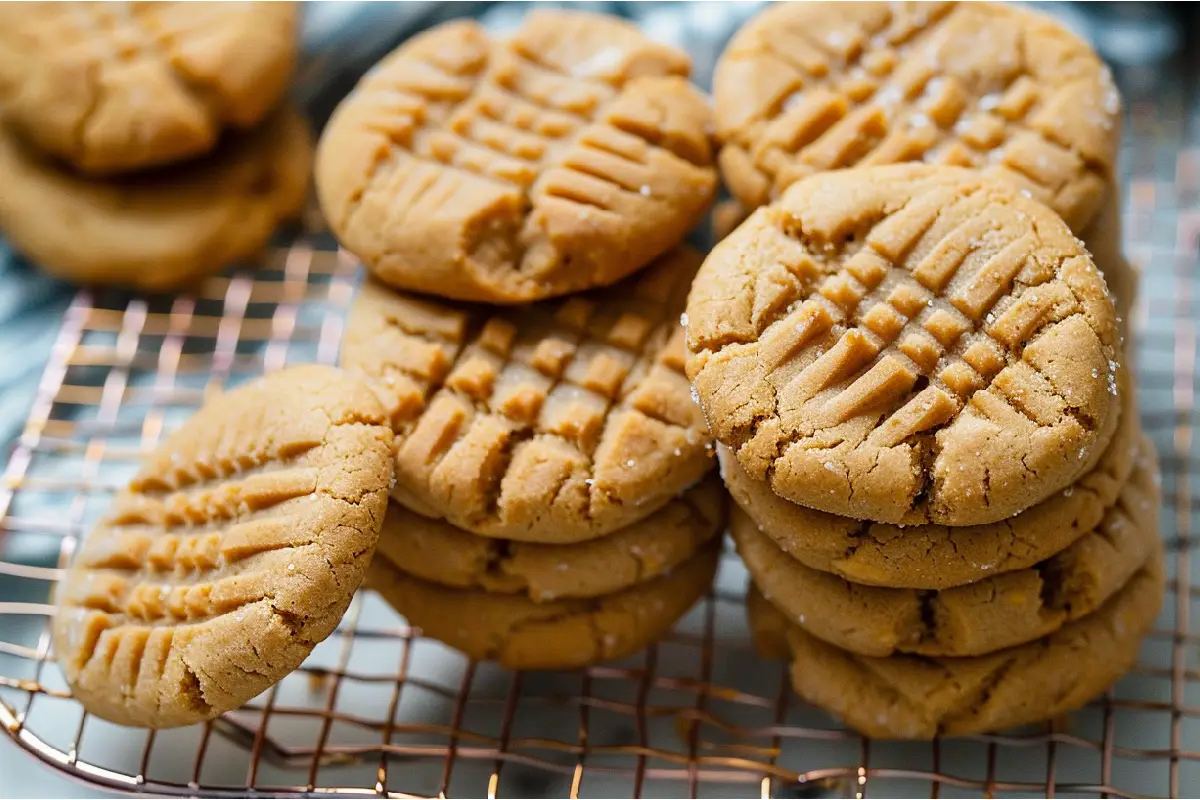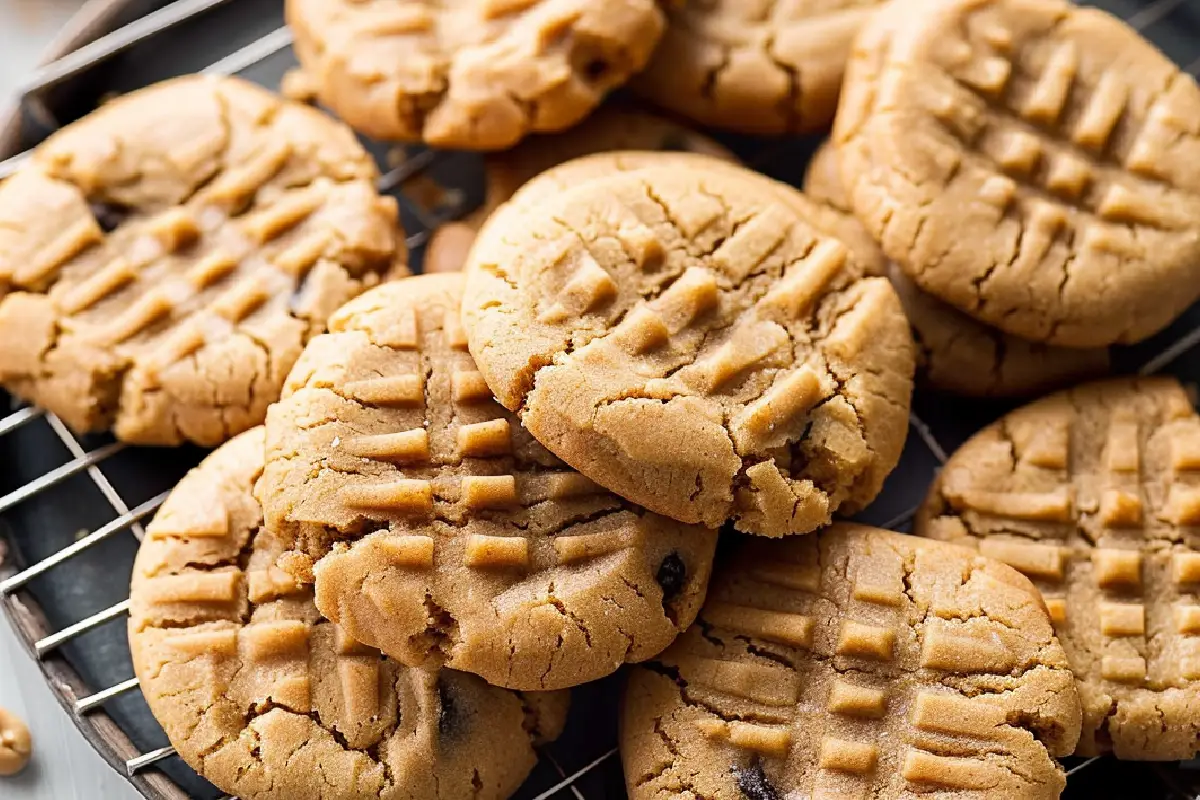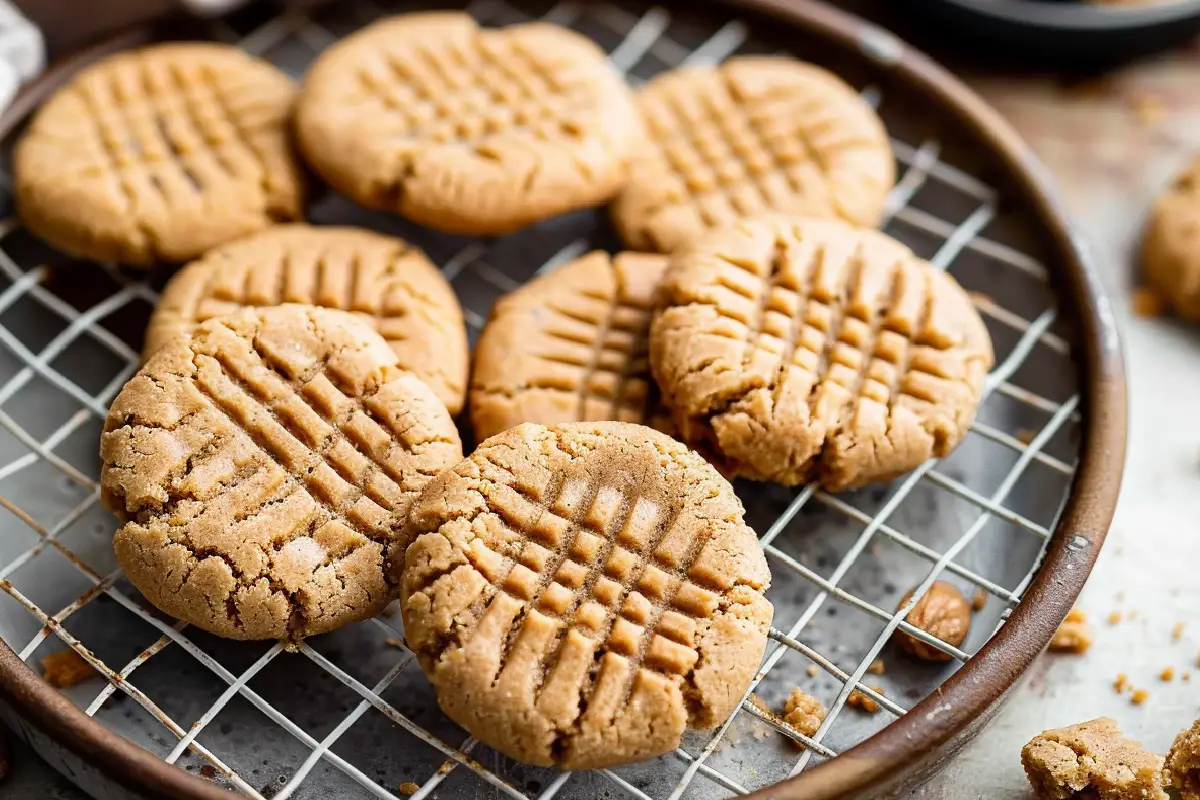Peanut butter cookies are a classic treat cherished by many for their rich, nutty flavor and tender, slightly crumbly texture. With a few simple ingredients, these cookies are easy to make and offer endless variations to suit any taste. Whether you’re baking for a family gathering, a quick snack, or just to satisfy a sweet tooth, peanut butter cookies are always a great choice.
In this guide, we will delve deeper into the basic ingredients needed for peanut butter cookies, how each component contributes to the cookie’s success, and advanced tips for creating the perfect cookie every time. From choosing the right type of peanut butter to understanding the role of each ingredient, you’ll find everything you need to master this beloved recipe.
Why Make Peanut Butter Cookies?
Peanut butter cookies are incredibly popular because they are simple, delicious, and versatile. With just a handful of pantry staples, you can whip up a batch in no time. Here are some reasons why peanut butter cookies remain a go-to dessert:
- Minimal Ingredients: The basic recipe requires only three to five ingredients, making it perfect for quick baking.
- Customizable: You can easily add chocolate chips, nuts, or other mix-ins to change up the flavor and texture.
- Kid-Friendly: A great recipe for kids learning to bake due to its simplicity and quick results.
For those interested in a simpler recipe, check out the 4-ingredient peanut butter cookies, which are perfect for beginners.
Basic Ingredients Overview
Understanding the role of each ingredient is key to mastering peanut butter cookies. Here’s a closer look at the core components:
- Peanut Butter: The main flavor provider, adding richness and nuttiness.
- Sugar: Adds sweetness and contributes to the cookie’s texture.
- Eggs: Binds the ingredients together and adds moisture.
- Flour: Provides structure and stability.
- Butter or Oil: Adds moisture and a rich flavor.
If you’re having trouble with consistency, read about why some peanut butter cookies might fall apart and how to fix them.
Detailed Breakdown of Each Ingredient

Peanut Butter
Peanut butter is the heart of these cookies, giving them their distinct flavor and texture. When choosing peanut butter, consider the following:
- Creamy Peanut Butter: Smooth, easy to work with, and provides a uniform texture.
- Crunchy Peanut Butter: Adds extra texture with bits of peanuts.
- Natural Peanut Butter: Less processed with a stronger peanut flavor, but the oil may separate, requiring thorough mixing.
- Processed Peanut Butter: Brands like Jif or Skippy are often preferred for their smooth texture and added sweetness.
Tips for Using Peanut Butter
- Mix Well: If using natural peanut butter, ensure it’s well-mixed to incorporate the oils evenly.
- Measure Accurately: Too much peanut butter can make the cookies dense, while too little may result in a dry texture.
Sugar
Sugar is essential not just for sweetness but also for creating the desired texture. The type of sugar you use can significantly impact the outcome:
- White Sugar: Produces a lighter, crisper cookie.
- Brown Sugar: Adds a deep, molasses-like flavor and results in a chewier texture.
- Alternative Sugars: Honey, maple syrup, or other substitutes can be used for a different flavor profile or to make the cookies healthier.
Tips for Using Sugar
- Adjust Sweetness: If you find the cookies too sweet, consider reducing the sugar slightly. However, this may alter the texture.
- Combine Sugars: For the best of both worlds, try a mix of white and brown sugar to balance crispiness and chewiness.
Eggs
Eggs serve multiple purposes in peanut butter cookies: they act as a binding agent, add moisture, and contribute to the overall structure. Without eggs, the cookies may be crumbly and lack cohesiveness.
Tips for Using Eggs
- Room Temperature: Use eggs at room temperature to ensure they blend well with the other ingredients.
- Substitutes: For vegan cookies, use flax eggs or chia seeds mixed with water as an alternative. This option works well without compromising the texture significantly.
Flour
Flour adds the necessary structure to the cookies, helping to hold the other ingredients together. The type of flour used can affect the cookie’s texture and flavor:
- All-Purpose Flour: The standard choice for most cookie recipes, providing a neutral base.
- Whole Wheat Flour: Adds a nutty flavor and slightly denser texture.
- Almond Flour: Great for a gluten-free option, offering a light, slightly sweet taste.
- Coconut Flour: Absorbs a lot of moisture, so use sparingly or with extra liquid.
Tips for Using Flour
- Measure Correctly: Spoon the flour into your measuring cup and level it off to avoid using too much, which can make the cookies dry.
- Sift for Lightness: Sifting flour before adding it can make your cookies lighter and fluffier.
Butter or Oil
Butter or oil is used to add moisture and richness to peanut butter cookies. Each has its own unique impact on the final texture:
- Unsalted Butter: Provides a rich, creamy flavor and contributes to a tender texture.
- Salted Butter: Can be used, but reduce added salt in the recipe.
- Vegetable Oil: Makes the cookies soft and chewy, though it can lack the depth of flavor that butter provides.
- Coconut Oil: A dairy-free option that adds a subtle coconut flavor.
Tips for Using Butter or Oil
- Room Temperature Butter: Softened butter incorporates better with other ingredients, creating a more uniform dough.
- Avoid Overmixing: Overmixing after adding butter or oil can result in dense cookies.
Leavening Agents (Baking Soda/Baking Powder)
Baking soda and baking powder are small but critical additions that help the cookies rise slightly and prevent them from becoming too dense.
Tips for Leavening Agents
- Use Fresh Leaveners: Expired baking soda or powder won’t work effectively, leading to flat cookies.
- Measure Precisely: Too much can cause the cookies to spread too much; too little may make them dense.
Optional Ingredients and Enhancements
Enhance your peanut butter cookies with these additional ingredients:
- Vanilla Extract: Adds a rich, aromatic flavor that complements the peanut butter.
- Chocolate Chips: For those who love a touch of chocolate, adding semi-sweet or dark chocolate chips can take your cookies to the next level.
- Nuts: Chopped peanuts, almonds, or pecans add a delightful crunch.
- Spices (Cinnamon, Nutmeg): Introduce subtle spice notes that pair beautifully with peanut butter.
Salt
Salt is a small but mighty addition that enhances the flavor of all the ingredients, balancing sweetness and highlighting the peanut butter’s natural nuttiness.
Tips for Using Salt
- Don’t Skip It: Even a small pinch of salt can make a big difference in the overall taste of your cookies.
- Use Sea Salt Flakes: For a gourmet touch, sprinkle sea salt flakes on top before baking.
Variations and Advanced Techniques
Flourless Peanut Butter Cookies
For a flourless version, simply omit the flour. The cookies will be denser and have a stronger peanut flavor. This variation is perfect for those looking for a gluten-free option.
Vegan Peanut Butter Cookies
To make vegan peanut butter cookies, replace the eggs with flax eggs (1 tablespoon of flaxseed meal mixed with 3 tablespoons of water per egg) and use plant-based butter or oil.
Peanut Butter Oatmeal Cookies
Adding oats to your peanut butter cookies provides extra texture and a bit of a healthy twist. Oats add fiber and a chewy bite that complements the smoothness of the peanut butter.
Troubleshooting Common Issues
Why Are My Peanut Butter Cookies Falling Apart?
This common issue often arises when there isn’t enough binding agent (like eggs) or if the dough is too dry. Adding a little extra egg or a tablespoon of water can help fix this problem. For more tips, read about why some peanut butter cookies might fall apart.
How to Achieve the Perfect Texture
- Chewy Cookies: Use more brown sugar and a shorter baking time.
- Crispy Cookies: Opt for more white sugar and a longer bake at a lower temperature.
Preventing Cookie Spread
- Chill the Dough: Letting the dough rest in the fridge for 30 minutes before baking helps prevent the cookies from spreading too much.
- Use the Right Pan: Baking on a lined cookie sheet (preferably parchment paper) helps control spread and ensures even baking.
FAQs about The Basic Ingredients for Peanut Butter Cookies
- What are the main ingredients in peanut butter cookies?
The essential ingredients include peanut butter, sugar, eggs, and often flour and butter. - Can I use natural peanut butter?
Yes, but make sure to mix it thoroughly to incorporate the oil that separates. - How do I make peanut butter cookies without flour?
Omit the flour for a denser, gluten-free cookie that still packs a strong peanut flavor. - Can I freeze peanut butter cookie dough?
Yes, freezing the dough allows you to bake fresh cookies on demand without additional prep. - What makes cookies chewy vs. crispy?
Brown sugar and a shorter bake time make cookies chewy, while white sugar and longer baking create a crispier texture.
Tips for Perfect Peanut Butter Cookies
- Avoid Overmixing: Overmixing the dough can make cookies tough.
- Chill the Dough: Prevents spreading and helps achieve a thicker cookie.
- Use Parchment Paper: Ensures even baking and easy cleanup.
Conclusion

Peanut butter cookies are more than just a simple dessert; they are a versatile canvas that allows bakers to explore different textures, flavors, and dietary needs with minimal effort. By mastering the basic ingredients—peanut butter, sugar, eggs, flour, and butter—you can create a variety of cookies that range from classic and chewy to crispy and crunchy. Understanding the role each ingredient plays empowers you to tweak the recipe according to your preferences, whether you’re aiming for a traditional cookie or a healthier, flourless version. The addition of optional ingredients like chocolate chips, nuts, and spices can elevate your cookies, turning them into a customized treat that reflects your unique taste.
Moreover, the simplicity of peanut butter cookies makes them accessible to all levels of bakers, from beginners to experts. They are a perfect starting point for those new to baking and provide ample opportunities for seasoned bakers to experiment with new techniques and ingredients. Whether you’re making a batch for a quick snack, a special occasion, or as a thoughtful homemade gift, these cookies are sure to impress with their rich, nutty flavor and delightful texture. So, gather your ingredients, preheat your oven, and enjoy the process of baking these timeless cookies. With every tweak and variation, you’ll not only enhance your skills but also create cookies that are uniquely yours—one delicious batch at a time.

